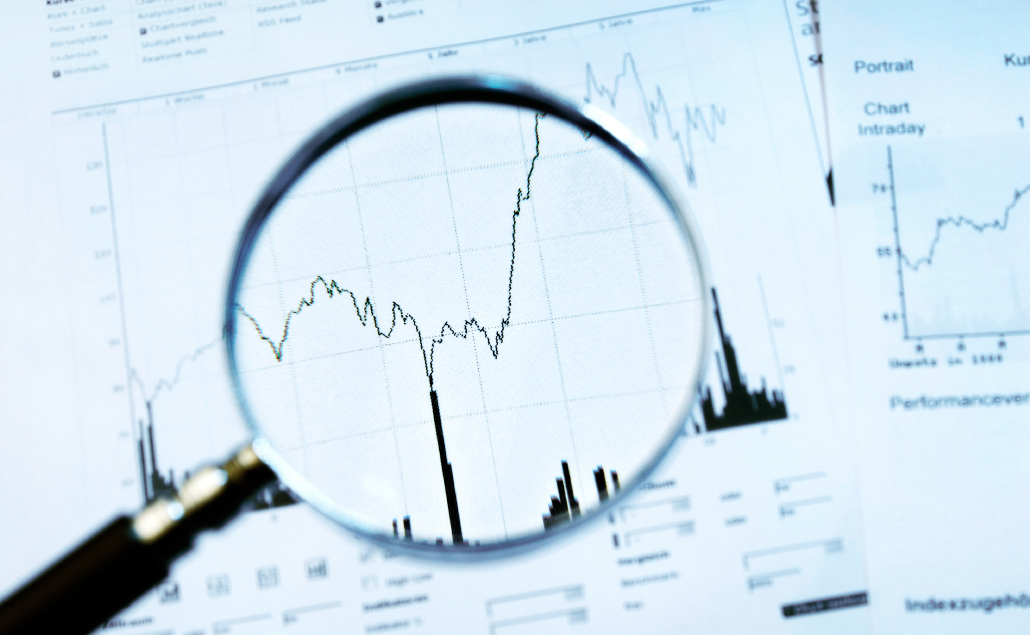Technical analysis is a method of analyzing financial markets, primarily stocks, by using the study of price movements and patterns to make predictions on future prices. It is based on the belief that market prices are cyclical, and are determined by trends of investor confidence and demand.
Technical analysis is not concerned with the fundamental value of security but instead focuses on the price movement and patterns of security. This type of analysis is used by traders to develop ideal entry and exit points for trading, as well as to identify potential support and resistance levels.
Additionally, technical analysis can help generate ideas for traders to develop strategies with higher probabilities of success. Analysts use an array of statistical and charting tools such as moving averages and oscillators to identify trends, momentum, and patterns in historical and current price action. This data can then be used to formulate an opinion of where the security may trade in the both long-term and short-term and can be effective for both day traders and investors. While technical analysis is not foolproof, it has been proven to be very effective in identifying trading opportunities. Therefore, technical analysis is a valuable tool for active traders or investors seeking to maximize short-term profits or optimize long-term gains.
What is an example of a Technical Analysis?
To give an example of technical analysis, a trader might look at the historical price information of a particular stock and use that information to make an educated guess about the future stock price direction. They could look for potential support and resistance levels, analyze the volume of trading activity, and study the market sentiment surrounding the stock. With this information, the trader can potentially decide whether or not to make a buy or sell trade on the stock.
Related Topics | Keep learning more with Eurotrader
When discussing the importance of technical analysis, it is impossible not to mention the fundamental analysis! Click on the link below to follow both fundamental and technical analysis data on money markets day by day!
What are the Advantages And Disadvantages of Technical Analysis?
Technical analysis is an important tool for investors, providing an objective approach to analyzing market data. However, it is important to consider both the advantages and disadvantages of technical analysis when making investing decisions.
Advantages of Technical Analysis
- Technical analysis provides investors with an objective approach to identifying and responding to market trends quickly.
- Technical analysis helps to identify potential opportunities and can be used to confirm investment decisions.
- Technical analysis helps investors anticipate potential risks.
- Technical analysis allows investors to react quickly to changing market conditions, minimizing the potential for losses.
- Technical analysis also provides investors with a better understanding of the market and helps to develop a sound trading system.
- Many technical analysis tools are readily available, allowing investors to make informed decisions quickly and easily.
Disadvantages of Technical Analysis
- Technical analysis does not take into account fundamental factors that may be influencing the market.
- Technical analysis is subjective, so two investors may come to different conclusions based on the same data.
- Since technical analysis is based on past data, it does not always anticipate future market behavior accurately.
What are the Types of Technical Analysis?
Technical analysts rely on a variety of tools and techniques to make their predictions, so it’s important for investors to understand the different types of technical analysis.
Types of Technical Analysis
- Trend Analysis: This type of technical analysis involves looking for patterns in past price movements to identify the direction of current and future price movements.
- Momentum Analysis: This type of technical analysis focuses on the momentum of trading volume to identify potential buying and selling opportunities.
- Support and Resistance Analysis: This type of technical analysis focuses on the levels at which buyers and sellers are likely to enter and exit positions.
- Relative Strength Index (RSI): This type of technical analysis measures the strength and direction of a price movement relative to other markets or its own past movements.
- Candlestick Analysis: This type of technical analysis looks at patterns in candlestick charts to identify potential buying and selling opportunities.
- Volume Analysis: This type of technical analysis looks at trading volumes to identify potential buying and selling pressure.
At Eurotrader, we’re passionate about helping our members become successful traders. We provide an array of resources and support that make trading easier and more profitable. With our guidance, you can increase your return on investment and optimize your trading strategies. Join the Eurotrader community and start trading today to take your financial goals to the next level.
Disclaimer
Eurotrader doesn’t represent that the material provided here is accurate, current, or complete, and therefore shouldn’t be relied upon as such. The information provided here, whether from a third party or not, isn’t to be considered as a recommendation; or an offer to buy or sell; or the solicitation of an offer to buy or sell any security, financial product, or instrument; or to participate in any particular trading strategy. We advise any readers of this content to seek their advice.


